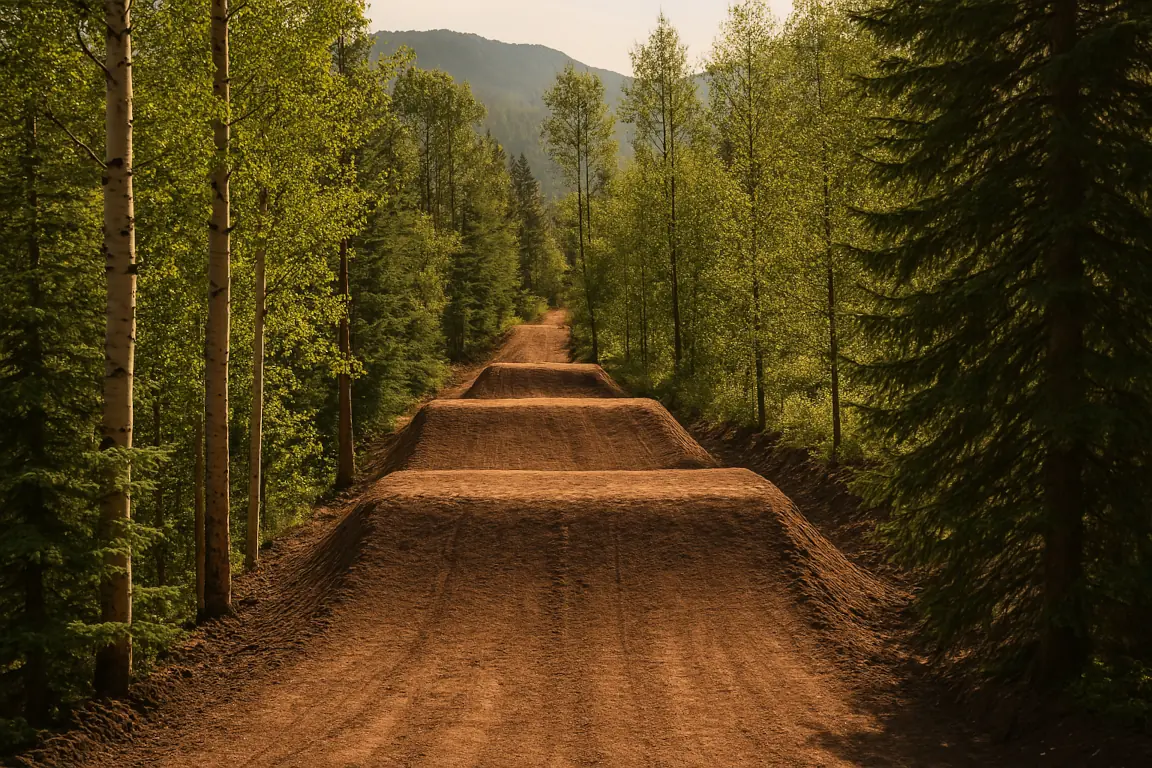
Tabletop Jump Construction Guide
Learn how to design and build a tabletop jump that is both fun to ride and built to last.
Overview
What is a Tabletop Jump
Tabletop jumps are one of the most versatile and rider-friendly features you can add to a mountain bike trail. Unlike gap jumps, tabletops provide a flat 'table' between the takeoff and landing, making them safer for riders of all skill levels. This tutorial will guide you through the process of designing and building a tabletop jump that is both fun to ride and built to last.
Understanding Jump Dynamics
Before you start building, it's important to understand the physics of jumping. A well-designed jump should:
- Launch riders at an appropriate angle (usually 25-45 degrees)
- Provide enough airtime to be fun but not intimidating
- Allow riders to clear the table or roll over it safely
- Have a landing that matches the trajectory of the rider
Site Selection
Choosing the right location for your jump is crucial. Look for:
- A straight section of trail with good visibility
- Enough approach distance to build speed (at least 30-50 feet)
- Adequate runout after the landing
- A slight downhill grade (2-5%) to help maintain speed
- Good drainage to prevent water damage
Jump Dimensions
The size of your jump should match the intended skill level and speed of the trail. Here are some general guidelines:
BBeginner Jumps
Design Philosophy: Low consequences, forgiving geometry, focus on skill development
- Height: 2-3 feet
- Distance: 6-10 feet
- Total Ramp Length: 6-10 feet
- Takeoff Angle: 15-25 degrees
- Typical Speed: 8-12 mph
- Transition Radius: 8-12 feet
IIntermediate Jumps
Design Philosophy: Progressive features, introducing gaps, building confidence
- Height: 3-5 feet
- Distance: 10-16 feet
- Total Ramp Length: 10-14 feet
- Takeoff Angle: 25-35 degrees
- Typical Speed: 12-18 mph
- Transition Radius: 10-15 feet
AAdvanced Jumps
Design Philosophy: Performance features, longer air time, technical precision required
- Height: 5-6 feet
- Distance: 15-25
- Total Ramp Length: 12-18
- Takeoff Angle: 30-45 degrees
- Typical Speed: 16-25 mph
- Transition Radius: 12-20 feet
Need help with calculations?
Our jump calculator helps you design the perfect jump dimensions based on physics principles.
Progression
Consider building a series of progressively larger jumps to help riders develop their skills. Start with smaller tabletops and gradually increase the size and complexity as riders become more comfortable.
Progression Line Tips
- Space jumps with enough distance for riders to recover and prepare
- Increase height and distance gradually (6-12" increments)
- Maintain consistent style and flow between features
- Provide clear sight lines so riders can see what's ahead
- Consider adding optional bypass lines for beginners
Conclusion
Building a proper tabletop jump takes time and effort, but the results are worth it. A well-constructed tabletop will provide a fun, safe jumping experience for riders while standing up to years of use with proper maintenance.
Key Takeaways
- Proper planning and site selection are crucial for success
- Take time to compact thoroughly at every stage
- Pay special attention to drainage features
- Test and adjust based on rider feedback
- Regular maintenance will extend the life of your jump
- Always prioritize safety in your design